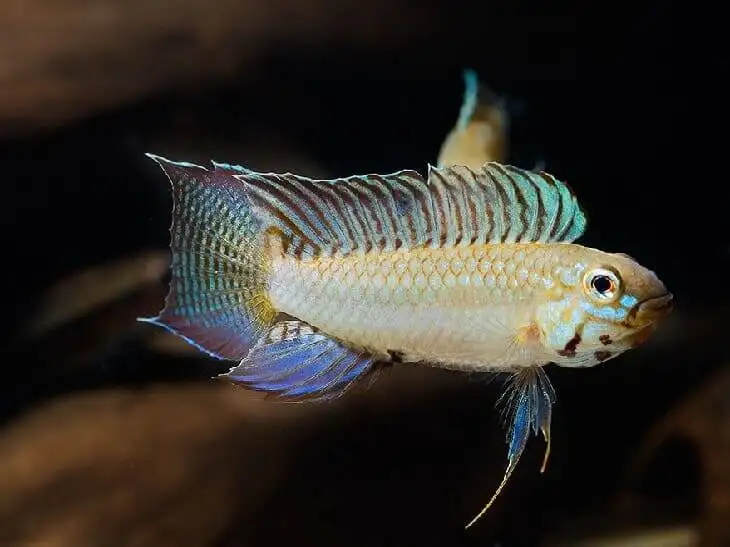Apistogramma viejita

Apistogramma viejita lives in the basin of the Rio Meta River flowing through Colombia, South America. The fish stay in calm currents, on sandy shoals. In these areas, the water is very muddy and heavily sun-warmed. The fish was first discovered in 1979, and the first shipments to Europe were recorded in 1982. She got her name because of a strong parental instinct and translated from Spanish "viejita" means "mother". The fish are not difficult to keep and can be recommended to novice aquarists.
Apistogramma viejita males have a reddish body coloration with dark markings on the sides and a large black spot at the root of the tail plumage. Females are less brightly colored than males. Their body is gray with yellow spots. Males reach a size of 7 cm and females 6 cm.
Apistogramma viejita is a very attractive fish leading a measured lifestyle. Keep Apistogramma viejita can be in a common aquarium with other fish species comparable in size and nature. Apistogramma preferably contain a small harem, which will be 1 male and 3-4 females. For such a number of fish suitable aquarium of 60 liters.
As the ground can be used coarse-grained river sand. The perimeter of the aquarium should be densely planted with aquarium plants. At the bottom should be placed some large stones and snags.
Water parameters: temperature 22-30° C, hardness dH 1-10°, acidity pH 5,5-7,5. Requires filtration, aeration and a weekly change of 1/5 of the aquarium water with fresh.
The lighting should be dimmed. This can be done by placing bushes of floating plants on the surface of the water, which will serve as a good natural light filter.
In natural conditions Apistogramma viejita feed on insect larvae, plankton and detritus. In aquarium conditions the fish are fed live and frozen food: artemia, daphnia, moths. You can also feed the fish flake and pelleted foods. Feed the fish twice a day.
Reproduction
For breeding Apistogramma viejita requires a spawning tank of about 30 liters. Design of the spawning tank should be similar to the main aquarium.
Spawning stimulated by reducing the water hardness to dH 5°, while its pH acidity should be within 5.0-6.0, and the temperature 24-27° C.
During spawning, the female hatches about 80-100 eggs in a hole dug in advance together with the male near a rock or cave, or on a broad plant leaf.
Both producers take care of the clutch and future fry.
The fry are fed artemia at least 4 times a day.
The life expectancy of Apistogramma viejita is about 4-5 years.








